I've been practicing some Fourier series questions and then verifying my answers by generating an equivalent graph on MATLAB and comparing it with the graph generated by PSpice in simulating the same circuit.
This is my working:
The Fourier series of the source current:
\$i_s\left(t\right)=1+\frac{4}{\pi}\sum_{n=1}^{\infty}{\frac{1-\left(-1\right)^n}{n}\sin{n\pi t}}\$
Then do a source transformation to simplify the circuit: \$v_s\left(t\right)=1i_s\left(t\right)\$
simulate this circuit – Schematic created using CircuitLab
Then working in the phasor domain and using voltage division:
\$\omega_n=\pi n\$
\$V_{out}=\frac{Z_L}{Z_L+3}V_s\$
\$V_{out}=\frac{j\omega_n}{j\omega_n+1}V_s\$
\$V_s=I_s=\frac{4}{\pi n}\left(1-\left(-1\right)^n\right)e^{j\left(-90\right)}\$
\$V_{out}=\left(\frac{j\omega_n}{j\omega_n+1}\right)\left(\frac{4\left(1-\left(-1\right)^n\right)}{\pi n}\right)e^{j\left(-90\right)}\$
\$V_{out}=\left(\frac{4\left(1-\left(-1\right)^n\right)}{\pi n}\right)\left(\frac{w_ne^{j\left(90\right)}}{\sqrt{1+\omega_n^2}e^{j\left(\tan^{-1}{\pi n}\right)}}\right)e^{j\left(-90\right)}\$
Taking only odd n terms since evens result in 0:
\$V_{out}=\left(\frac{8}{\sqrt{1+\pi^2n^2}}\right)e^{j\left({-\tan}^{-1}{\pi n}\right)}\$
and finally in the time domain:
\$v_{out}\left(t\right)=\sum_{k=1}^{\infty}{\frac{8}{\sqrt{1+\pi^2n^2}}\cos{\left(\pi nt-\tan^{-1}{\pi n}\right)}}\$
with n = 2k - 1 for odd terms
I plot my answer in MATLAB and it seems to be the negative of what the equivalent PSpice graph shows.
Can someone point out what is wrong please?

